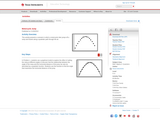
This activity presents a scenario in which a motorcycle rider jumps off a ramp and travels along a quadratic path through the air.
- Subject:
- Mathematics
- Material Type:
- Activity/Lab
- Provider:
- Texas Instruments
- Date Added:
- 03/07/2018

This activity presents a scenario in which a motorcycle rider jumps off a ramp and travels along a quadratic path through the air.

Khan video using the area model to multiply two linear expressions.
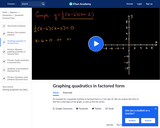
An example for a quadratic function in factored form is y=½(x-6)(x+2). We can analyze this form to find the x-intercepts of the graph, as well as find the vertex.
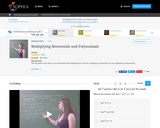
The purpose of this lesson is to show that when following the rules for multiplying, monomials can be multiplied by polynomials.
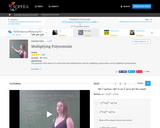
The purpose of this lesson is to show that when following the rules for multiplying, polynomials can be multiplied by polynomials.

In this series of videos, NC Virtual educator, Melissa, demonstrates systems of equations and systems of inequalities in a series of lightboard videos.

Students will explore distributions of various census data sets to determine whether it can be reasonably assumed that those data follow a normal distribution, based on students' analysis of either a histogram or a normal probability plot for each data set. They will then discuss their findings with a partner who analyzed the other type of graph for each data set.
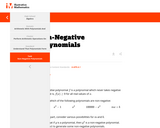
Polynomials constitute a rather subtle point in the common core framework - whereas a vast majority of the time we think of f(x)=x^2+1 as a function, the standards surrounding polynomial arithmetic have students learn to treat these as objects in and of themselves, to be manipulated algebraically using much the same rules as we have for integer arithmetic.

Students graph polynomials to determine the value and number of zeros for a given polynomial.

Website with article on what outliers are and their effect on data. Interactive practice problems are also included.

This task addresses NC.M1.A-REI.6, solving systems of linear equations exactly, and provides a simple example of a system with three equations and three unknown.

Desmos activity that allows students to see where quadratic equations are equal to zero by their graph and table.
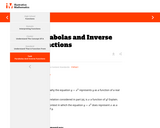
This task assumes students have an understanding of the relationship between functions and equations. Using this knowledge, the students are prompted to try to solve equations in order to find the inverse of a function given in equation form: when no such solution is possible, this means that the function does not have an inverse. Part (c) is an open-ended question which, with teacher guidance, leads students to realize that this problem can be fixed by restricting the domain of the function to a smaller set.

In this Khan Academy activity, students will determine if two lines are perpendicular or parallel from their equations.
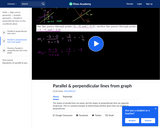
Khan video developing idea of parallel and perpendicular lines using point on the line.
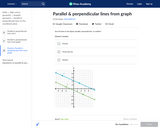
In this Khan Academy activity, students will determine if two lines are perpendicular or parallel from their graph.

The purpose of this task is to investigate the meaning of the definition of function in a real-world context where the question of whether there is more than one output for a given input arises naturally. In more advanced courses this task could be used to investigate the question of whether a function has an inverse.

This task explores the real world topic of building light rails. Throughout the implementation of this task the students will learn about the cost of building railways and how to implement them within a budget. This task explores such mathematical concepts of using coordinates to find the distance between points, using coordinates to build polygons and find the area and length of sides, and writing equations of parallel lines.
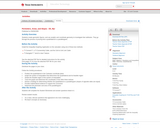
Texas Instruments activity using properties of quadrilaterals then calculating area and perimeter.

In this Khan Academy activity, students will complete the point-slope equation of a line given two points.